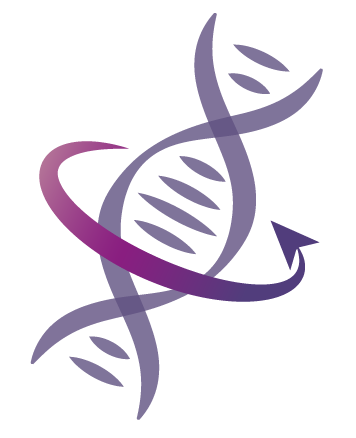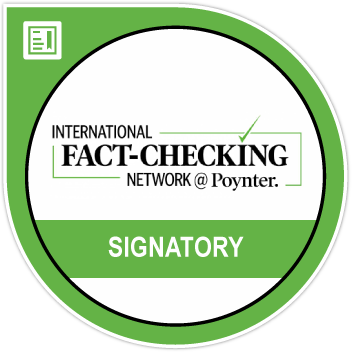
Fails to grasp significance of observation: Some in vitro results suggested some of the herbs and mushrooms listed in the claim may have antiviral properties. However, in vitro results cannot predict effects in humans because the human body is more complex than cells growing in a petri dish.

FULL CLAIM: Several natural products like plants and mushrooms are a cure for herpes and HIV infection
REVIEW
A Facebook post from December 2024 presented a list of herbs and natural products touted as cures for herpes and HIV, the virus that causes AIDS. The post’s author indicated that the list was taken from the book The Lost Book of Herbal Remedies by Claude Davis and herbalist Nicole Apelian. On her website, Apelian sells tinctures of some of the ingredients promoted in her book as treatment for HIV or herpes.
Apelian made unsubstantiated claims about natural remedies in the past, as this letter from the U.S. Federal Trade Commission (FTC) attests. In the letter, the FTC instructed Apelian to cease promoting natural cures for COVID-19 because they weren’t backed by scientific evidence.
A Vox article from May 2024 explained that Apelian’s book found success through TikTok Shop, TikTok’s e-commerce platform. Vox reported that several influencers promoted the book, earning commissions on each sale, and that the book sold more than 60,000 copies on TikTok Shop.
However, as we will show below, the claim that herpes and HIV can be cured with natural products is unsubstantiated. To this day, there is no cure for herpes or HIV infection.
To evaluate the scientific credibility of the post’s claim, we conducted searches on PubMed to look for scientific evidence about the natural products’ ability to cure herpes and HIV in humans (see Notes). PubMed is a repository of published biomedical research hosted by the U.S. National Library of Medicine.
No results on PubMed were found for some natural products listed in the book
The list contained mostly plants, one species of lichen, two types of mushrooms, and honey. These materials are used in traditional medicine for a wide range of ailments, and many contain compounds with antioxidant, anti-inflammatory, or antimicrobial properties.
For several items on the list, a search for clinical evidence of their ability to cure herpes and/or HIV returned no results.
This was the case for anise hyssop, calendula, cat’s claw, red root (also known as New Jersey tea), Usnea (also known as Old Man’s Beard), turkey tail mushroom, and slippery elm for herpes; oshá for HIV; and black walnut and Oregon grape for both diseases.
Many products from the list exhibited antiviral properties in in vitro studies, but not in humans
For other natural products in the list, available evidence of antiviral activity was limited to in vitro studies. Examples of antiviral properties are blocking the entry of the virus into cells, thereby blocking infection, and blocking of viral replication in cells.
In vitro studies are performed in test tubes or cells grown in Petri dishes. They are important in early stages of drug discovery because they allow research in a simplified and well-controlled environment. However, they cannot substitute clinical trials that are conducted in people. This is because cells growing in the laboratory cannot fully represent the complexity of the human body and the diversity of the human population.
Therefore, blinded randomized controlled clinical trials, considered the gold standard in pharmaceutical research, are necessary to demonstrate the effectiveness of a treatment.
In the case of anti-herpes activity, our search only returned in vitro results for the following: Chaga mushroom, chickweed, echinacea, greater burdock[1], lemon balm[2-4], and selfheal[5-9].
In the case of anti-HIV activity, our search returned results from in vitro studies for cinnamon[10], selfheal[11] and turkey tail mushroom[12].
In summary, the antiviral properties of all these natural products were only observed in cell culture but weren’t demonstrated in humans, thus they cannot be considered as proven cures for herpes or HIV.
Some clinical trials were conducted but didn’t demonstrate that herbs “cure” herpes or HIV
For the remaining natural products in the list, some clinical results were available. However, these clinical studies only reported an improvement in patients’ symptoms, not a cure. A cure is a treatment that gets rid of the disease-causing agents. For instance, antibiotics that kill pathogenic bacteria are a cure for infections.
Honey is known for its antimicrobial and anti-inflammatory properties. A clinical trial found that honey, in addition to the herpes treatment acyclovir, accelerated the disappearance of oral lesions caused by herpes in the mouths of children with oral herpes. While this suggests that honey could be a possible treatment for herpes symptoms, it doesn’t mean that honey is a cure for the infection itself, as it alone doesn’t get rid of the virus.
Similarly, a small study on 28 patients found that a herbal mixture containing extracts of the reishi mushroom alleviated symptoms of labial and genital herpes and accelerated the disappearance of lesions[13]. But the study lacked proper randomization and blinding of participants. It also didn’t look at whether the herbal mixture treated the herpes infection itself, so it doesn’t provide evidence that reishi mushroom cures herpes.
The same goes for the herb St John’s wort. A small clinical trial found that the application of a product containing that herb was better at alleviating the pain caused by herpes lesions compared to acyclovir. Again, this trial didn’t investigate the effect of the herb itself as a cure for herpes.
Licorice has been the subject of many studies because it contains a molecule, glycyrrhizin, that has shown anti-HIV effects in several in vitro studies[14-20]. However, demonstrations of its curative effect in people is currently lacking. Our PubMed search returned one clinical trial from the 1980s which showed that intravenous injection of glycyrrhizin increased the number of white blood cells in patients with HIV infection, but there was no assessment of the effect of glycyrrhizin on the virus itself in those patients.
Another study observed a decrease in the viral load on patients receiving glycyrrhizin, but lacked a control group, which made it impossible to draw a conclusion[21]. Furthermore,we didn’t find studies that followed up on this research past the 1980s.
Conclusion
We were unable to find clinical evidence showing that the herbs, mushrooms, and other natural products listed in the Facebook post could cure herpes or HIV infections. In some cases, clinical studies reported that a few of these natural products could alleviate symptoms or accelerate the disappearance of herpes lesions. But these studies didn’t demonstrate that the products cured the infection itself. In other cases, antiviral activities were reported in vitro, but not in people. For the remaining products, no data whatsoever was found.
Therefore, we can conclude that the claim is unsubstantiated and that Apelian’s book The Lost Book of Herbal Remedies contains inaccurate claims about unproven natural cures.
NOTES
Here are the Pubmed queries used in our search:
Anise hyssop:
( “Anise hyssop”[Title] OR Agastache[Title] OR foeniculum[Title]) AND (herpes[Title] OR HSV[Title] OR HSV1[Title] OR HSV2[Title] OR HSV-1[Title] OR HSV-2[Title])
Black walnut:
( “black walnut”[Title] OR juglans[Title] OR nigra[Title]) AND ((herpes[Title] OR HSV[Title] OR HSV1[Title] OR HSV2[Title] OR HSV-1[Title] OR HSV-2[Title]) OR (HIV[Title] OR HIV-1[Title] OR HIV-2[Title] OR HIV1[Title] Or HIV2[Title] OR AIDS[Title] OR “acquired immunodeficiency”[Title] OR “human immunodeficiency virus”[Title]))
Calendula:
( Calendula[Title] OR “calendula officinalis”[Title]) AND (herpes[Title] OR HSV[Title] OR HSV1[Title] OR HSV2[Title] OR HSV-1[Title] OR HSV-2[Title])
Cat’s claw:
( “Cat’s claw”[Title] OR “Uncaria tomentosa”[Title] OR “Uncaria guianensis”[Title] OR Uncaria[Title] ) AND (herpes[Title] OR HSV[Title] OR HSV1[Title] OR HSV2[Title] OR HSV-1[Title] OR HSV-2[Title])
Chaga mushroom:
( “Chaga”[Title] OR “Inonotus obliquus”[Title] OR “Inonotus”[Title]) AND (herpes[Title] OR HSV[Title] OR HSV1[Title] OR HSV2[Title] OR HSV-1[Title] OR HSV-2[Title])
Chickweed:
( “chickweed”[Title] OR “stellaria media”[Title]) AND (herpes[Title] OR HSV[Title] OR HSV1[Title] OR HSV2[Title] OR HSV-1[Title] OR HSV-2[Title])
Cinnamon:
( “cinnamon”[Title] OR cinnamomum[Title]) AND (HIV[Title] OR HIV1[Title] OR HIV2[Title] OR HIV-1[Title] OR HIV-2[Title] OR AIDS[Title] OR “acquired immunodeficiency”[Title] OR “human immunodeficiency virus”[Title])
Echinacea:
( “echinacea”[Title] OR “angustifolia”[Title] OR “pallida”[Title] OR “purpurea”[Title] ) AND (herpes[Title] OR HSV[Title] OR HSV1[Title] OR HSV2[Title] OR HSV-1[Title] OR HSV-2[Title])
Greater Burdock:
( “greater burdock”[Title] OR “arctium lappa”[Title]) AND (herpes[Title] OR HSV[Title] OR HSV1[Title] OR HSV2[Title] OR HSV-1[Title] OR HSV-2[Title])
Honey:
( “honey”[Title]) AND (herpes[Title] OR HSV[Title] OR HSV1[Title] OR HSV2[Title] OR HSV-1[Title] OR HSV-2[Title])
Lemon Balm:
( “lemon balm”[Title] OR “melissa officinalis”[Title]) AND (herpes[Title] OR HSV[Title] OR HSV1[Title] OR HSV2[Title] OR HSV-1[Title] OR HSV-2[Title])
Licorice root:
( licorice[Title] OR glycyrrhizin[Title] OR “Glycyrrhiza glabra”[Title]) AND (anti-HIV[Title] OR HIV[Title] OR HIV1[Title] OR HIV2[Title] OR HIV-1[Title] OR HIV-2[Title] OR AIDS[Title] OR
Oregon Grape:
( “oregon grape”[Title] OR barberry[Title] OR “Berberis aquifolium”[Title]) AND ((anti-HIV[Title] OR HIV[Title] OR HIV1[Title] OR HIV2[Title] OR HIV-1[Title] OR HIV-2[Title] OR AIDS[Title] OR “acquired immunodeficiency”[Title] OR “human immunodeficiency virus”[Title]) OR (herpes[Title] OR HSV[Title] OR HSV1[Title] OR HSV2[Title] OR HSV-1[Title] OR HSV-2[Title]))
Oshá:
( Oshá[Title] OR “Ligusticum porteri”[Title] OR “bear root”[Title]) AND (anti-HIV[Title] OR HIV[Title] OR HIV1[Title] OR HIV2[Title] OR HIV-1[Title] OR HIV-2[Title] OR AIDS[Title] OR “acquired immunodeficiency”[Title] OR “human immunodeficiency virus”[Title])
Red root (New Jersey tea):
( “red root”[Title] OR “New Jersey tea”[Title] OR “Ceanothus americanus”[Title]) AND (herpes[Title] OR HSV[Title] OR HSV1[Title] OR HSV2[Title] OR HSV-1[Title] OR HSV-2[Title])
Reishi mushroom:
( “reishi”[Title] OR “Ganoderma lucidum”[Title]) AND (herpes[Title] OR HSV[Title] OR HSV1[Title] OR HSV2[Title] OR HSV-1[Title] OR HSV-2[Title])
Self heal:
( “self heal”[Title] OR “Prunella vulgaris”[Title]) AND ((anti-HIV[Title] OR HIV[Title] OR HIV1[Title] OR HIV2[Title] OR HIV-1[Title] OR HIV-2[Title] OR AIDS[Title] OR “acquired immunodeficiency”[Title] OR “human immunodeficiency virus”[Title]) OR (herpes[Title] OR HSV[Title] OR HSV1[Title] OR HSV2[Title] OR HSV-1[Title] OR HSV-2[Title]))
Slippery Elm:
( “slippery elm”[Title] OR “Ulmus rubra”[Title]) AND (herpes[Title] OR HSV[Title] OR HSV1[Title] OR HSV2[Title] OR HSV-1[Title] OR HSV-2[Title])
St John’s Wort:
( “St john’s Wort”[Title] OR “Hypericum perforatum”[Title]) AND (herpes[Title] OR HSV[Title] OR HSV1[Title] OR HSV2[Title] OR HSV-1[Title] OR HSV-2[Title])
Turkey Tail :
( “turkey tail”[Title] OR “Coriolus versicolor”[Title]) AND ((anti-HIV[Title] OR HIV[Title] OR HIV1[Title] OR HIV2[Title] OR HIV-1[Title] OR HIV-2[Title] OR AIDS[Title] OR “acquired immunodeficiency”[Title] OR “human immunodeficiency virus”[Title]) OR (herpes[Title] OR HSV[Title] OR HSV1[Title] OR HSV2[Title] OR HSV-1[Title] OR HSV-2[Title]))
REFERENCES
- 1 – Meana Dias et al. (2017) In vitro schistosomicidal and antiviral activities of Arctium lappa L. (Asteraceae) against Schistosoma mansoni and Herpes simplex virus-1. Biomedicine and Pharmacotherapy.
- 2 – Allahverdiyev et al. (2004) Antiviral activity of the volatile oils of Melissa officinalis L. against Herpes simplex virus type-2. Phytomedicine.
- 3 – Astani et al. (2014) Attachment and penetration of acyclovir-resistant herpes simplex virus are inhibited by Melissa officinalis extract. Phytotherapy Research.
- 4 – Vanti et al. (2020) Glycerosome of Melissa officinalis L. Essential Oil for Effective Anti-HSV Type 1. Molecules.
- 5 – Zhang et al. (2007) Chemical properties, mode of action, and in vivo anti-herpes activities of a lignin-carbohydrate complex from Prunella vulgaris. Antiviral research.
- 6 – Chiu et al. (2004) A polysaccharide fraction from medicinal herb Prunella vulgaris downregulates the expression of herpes simplex virus antigen in Vero cells. Journal of Ethnopharmacoly.
- 7 – Xu et al. (1999) Isolation and characterization of an anti-HSV polysaccharide from Prunella vulgaris. Antiviral Research.
- 8 – Zhang et al. (2021) Polyphenolic-protein-polysaccharide conjugates from Spica of Prunella vulgaris: Chemical profile and anti-herpes simplex virus activities. International Journal of Biological Macromolecules.
- 9 – Zhong et al. (2024) Prunella vulgaris polysaccharide inhibits herpes simplex virus infection by blocking TLR-mediated NF-κB activation. Chinese Medicine.
- 10 – Connell et al. (2016) A Cinnamon-Derived Procyanidin Compound Displays Anti-HIV-1 Activity by Blocking Heparan Sulfate- and Co-Receptor- Binding Sites on gp120 and Reverses T Cell Exhaustion via Impeding Tim-3 and PD-1 Upregulation. PLoS One.
- 11 – Oh v (2011) Inhibition of HIV-1 infection by aqueous extracts of Prunella vulgaris L. Virology Journal.
- 12 – Collins & Ng (1997) Polysaccharopeptide from Coriolus versicolor has potential for use against human immunodeficiency virus type 1 infection. Life Science.
- 13 – Hijikata et al. (2007) Herbal mixtures containing the mushroom Ganoderma lucidum improve recovery time in patients with herpes genitalis and labialis. Journal of Alternative and Complementary Medicine.
- 14 – Yoshida et al. (2009) Inhibitory effect of glycyrrhizin on the neutrophil-dependent increase of R5 HIV replication in cultures of macrophages. Immunology & Cell Biology.
- 15 – Nakashima et al. (1987) Inhibitory effect of glycyrrhizin on the in vitro infectivity and cytopathic activity of the human immunodeficiency virus [HIV (HTLV-III/LAV)]. Antiviral research.
- 16 – Takei et al. (2005) Glycyrrhizin inhibits R5 HIV replication in peripheral blood monocytes treated with 1-methyladenosine. Pathobiology.
- 17 – Ita et al. (1988) Mechanism of inhibitory effect of glycyrrhizin on replication of human immunodeficiency virus (HIV). Antiviral research.
- 18 – Harada S. (2005) The broad anti-viral agent glycyrrhizin directly modulates the fluidity of plasma membrane and HIV-1 envelope. Biochemical journal.
- 19 – Fomenko et al. (2022) Synthesis and In Vitro Study of Antiviral Activity of Glycyrrhizin Nicotinate Derivatives against HIV-1 Pseudoviruses and SARS-CoV-2 Viruses. Molecules.
- 20 – Sasaki et al. (2002) Effect of glycyrrhizin, an active component of licorice roots, on HIV replication in cultures of peripheral blood mononuclear cells from HIV-seropositive patients. Pathology.
- 21 – Hattori et al. (1989) Preliminary evidence for inhibitory effect of glycyrrhizin on HIV replication in patients with AIDS. Antiviral research.


